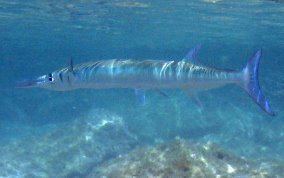Scientific name Ablennes hians Higher classification Ablennes | Family Belonidae Phylum Chordata Rank Species | |
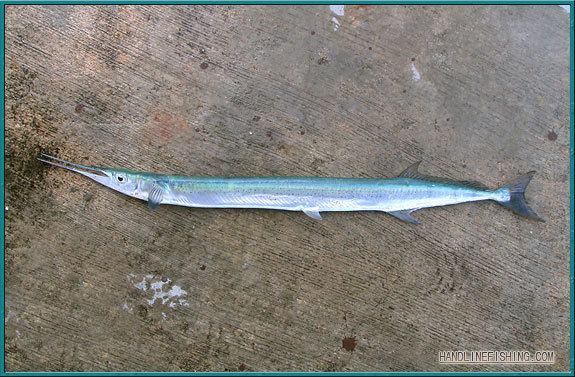 | ||
Genus AblennesD. S. Jordan & Fordice, 1887 Similar Beloniformes, Tylosurus, Houndfish, Needlefish, Strongylura | ||
The flat needlefish (Ablennes hians) the only known member of the genus Ablennes, is a marine fish of the family Belonidae. Flat needlefish are considered gamefish, frequently caught with the help of artificial lights, but are not often eaten because of their green-colored flesh.
Contents
- Flat needlefish grand occidental xcaret octobre 2011
- Description
- Distribution and habitat
- Reproduction
- References
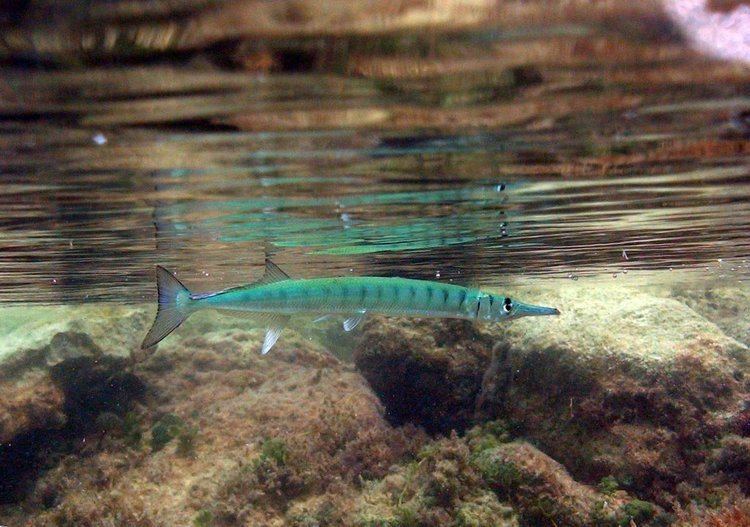
Flat needlefish grand occidental xcaret octobre 2011
Description
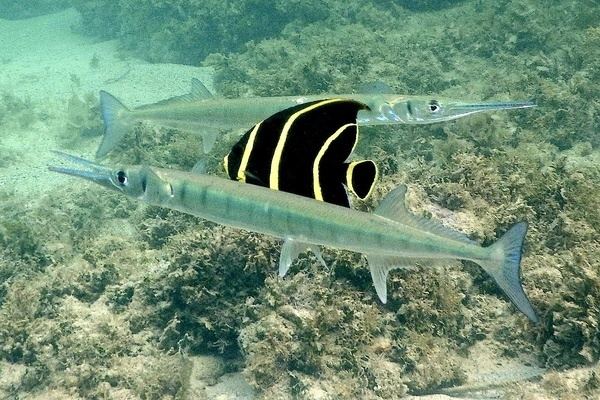
Although they have no spine, they do have several soft rays. There are 23-26 rays on the dorsal fin and 24-28 on the anal. They have 86-93 vertebrae. Dorsally, flat needlefish are blueish, white ventrally, with dark blotches and 12-14 vertical bars in the middle of the body. Flat needlefish have an elongated body, with scythe-shaped pectoral, and anal fins. They also have a dark lobe on the posterior part of their dorsal fins. The longest recorded flat needlefish measured 140 cm long, Measurements for flat needlifish body length do not include caudal fin and head because the fish's long jaws are often broken off. The largest recorded weight for a flat needlefish was 4.8kg.
Distribution and habitat
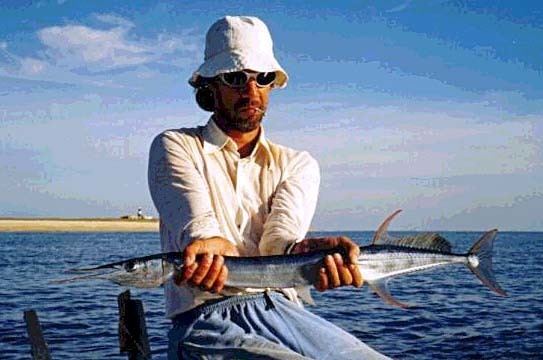
Flat needlefish are found worldwide in tropical and temperate seas. In the Eastern Atlantic, they are known from Cape Verde and Dakar to Moçamedes in Angola. In the western Atlantic they are known from Chesapeake Bay south to Brazil. They are found throughout the Indian Ocean, and in the western Pacific from the southern islands of Japan to Australia and Tuvalu.
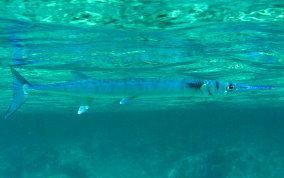
Flat needlefish usually live in neritic ocean waters near islands, estuaries, and near coastal rivers where they feed on smaller fish and occasionally gather in large schools.
Reproduction
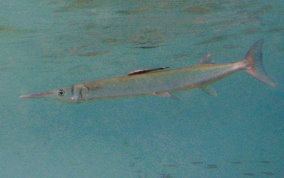
Flat needlefish lay eggs, which attach themselves to floating debris via filaments on the surface of each egg Only the left gonad in both sexes is developed, and in males, the right gonad is sometimes wholly absent.
